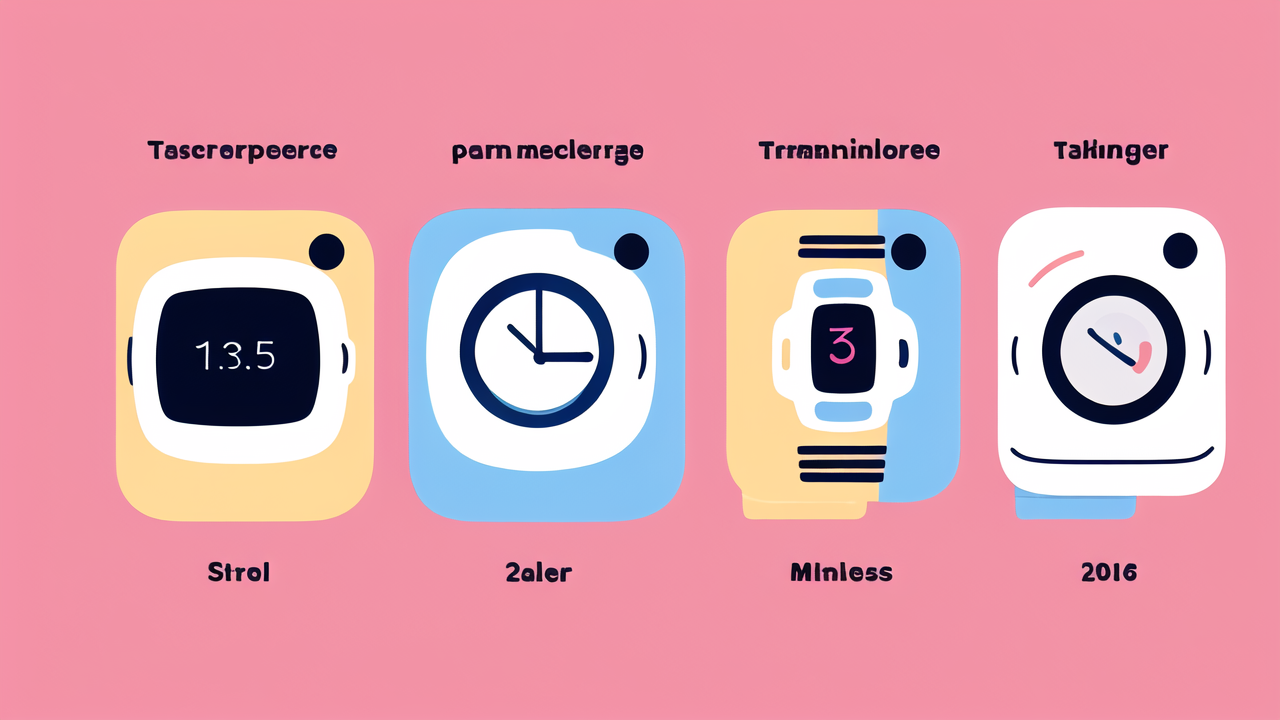Understanding the Evolution of Wearable Fitness Technology
The inception of wearable fitness devices in the 21st Century
Wearable fitness devices emerged in the early 2000s. These gadgets started as simple pedometers. They could count steps and track basic movement. As tech improved, they got smarter. By 2010, we saw the first Fitbit. It could track steps, sleep, and calories burned. This was a game-changer. It made fitness tracking accessible to everyone. People could now monitor their health easily. The idea of 'quantified self' began to take root. Users became more aware of their daily habits. This awareness led to better health choices.

Key technological advancements in personal fitness gadgets
Over time, fitness wearables have seen major upgrades. Here are some key advancements:
- GPS tracking for accurate distance measurement
- Heart rate monitors for better workout intensity tracking
- Water resistance for swim tracking
- Longer battery life for extended use
- Smartphone connectivity for real-time data syncing
- Sleep tracking for overall health monitoring
- Stress level monitoring through heart rate variability
These features have made wearables more useful. They now offer a complete picture of one's health. Users can track not just exercise, but overall wellness too.
Comparing past and present fitness wearables
Early wearables were basic. They mainly counted steps. Today's devices are mini-computers. They offer a wide range of features. Old devices had limited battery life. Now, some can last weeks on a single charge. Past wearables needed manual syncing. Current ones update data in real-time. Earlier, the focus was on step count. Now, it's on overall health. Modern wearables can even detect heart issues. They can alert users to potential health problems. The evolution is clear. We've moved from simple trackers to smart health companions.
The Impact of Wearable Tech on Exercise and Wellness Trends
Enhancing user engagement and accountability
Wearable tech has changed how we approach fitness. It's made exercise more engaging. Users can set daily goals and track progress. This creates a sense of achievement. It motivates people to stay active. The devices also send reminders to move. This helps combat sedentary lifestyles. Sharing features allow users to compete with friends. This adds a social aspect to fitness. It makes working out more fun and interactive. The constant feedback keeps users accountable. They're more likely to stick to their fitness plans.

Personalized fitness regimes through advanced data analytics
Wearables collect vast amounts of data. This data is used to create personalized fitness plans. The devices track various metrics:
- Heart rate
- Sleep patterns
- Activity levels
- Stress levels
- Calorie burn
AI algorithms analyze this data. They provide tailored advice. Users get workout suggestions based on their fitness level. The devices can recommend rest days when needed. They adjust goals based on progress. This personalization makes fitness more effective. It helps users achieve their goals faster. It also reduces the risk of injury from overtraining.
Wearable tech and the creation of gamified fitness experiences
Gamification has made fitness more fun. Wearables turn exercise into a game. Users can earn badges for achievements. They can complete challenges for rewards. Some apps create virtual races. Users compete against others from around the world. This adds excitement to regular workouts. It keeps users motivated. The competitive element pushes people to do more. Some devices have adventure modes. They create stories based on your activity. This makes mundane exercises feel like quests. It's a clever way to keep users engaged long-term.
Navigating the Future of Fitness Wearables in the United States
Technological integration and the role of AI
The future of fitness wearables is exciting. AI will play a bigger role. Devices will become smarter. They'll offer more accurate health predictions. We might see wearables that can detect diseases early. Integration with other devices will improve. Wearables might sync with smart home systems. They could adjust room temperature based on your body heat. AI chatbots could offer real-time fitness advice. Virtual reality might be integrated for immersive workouts. The line between fitness tracker and medical device will blur. Wearables could monitor chronic conditions. They might even administer medication.

Regulatory considerations for wearable fitness devices
As wearables become more advanced, regulations will evolve. Privacy concerns will be a major focus. Laws will need to protect user data. There might be stricter rules on data sharing. Medical-grade wearables will face FDA scrutiny. They'll need to prove their accuracy and safety. There could be new standards for fitness tracking accuracy. Consumer protection laws might expand to cover wearable tech. The industry will need to balance innovation with user safety. Clear guidelines on data use and storage will be crucial. Wearable companies might need new certifications. This will ensure they meet health and safety standards.
Predicting market trends and consumer expectations for the next 10 years
The wearable fitness market will likely grow rapidly. We might see more specialized devices. There could be wearables for specific sports or health conditions. Battery technology will improve. Devices might last months on a single charge. Screen technology could advance. We might see flexible, wrap-around displays. There will be a push for more sustainable materials. Consumers will expect longer-lasting products. Data accuracy will be crucial. Users will demand medical-grade precision. Integration with healthcare systems might become standard. Wearables could send data directly to doctors. Personalization will reach new levels. Devices might use DNA data for ultra-tailored advice. The focus will shift from fitness to overall wellness. Mental health tracking could become a key feature. Wearables will be more than gadgets. They'll be essential health tools.




Leave a comment
This site is protected by hCaptcha and the hCaptcha Privacy Policy and Terms of Service apply.